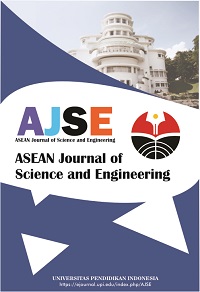Genetic Epidemiological Studies of Diabetes Mellitus in Hospital Population of District Bahawalpur
Abstract
Keywords
Full Text:
PDFReferences
Atkinson, M. A., and Eisenbarth, G. S. (2001). Type 1 diabetes: New perspectives on disease pathogenesis and treatment. Lancet, 358(9277), 221–229.
Becker, J., Nora, D. B., Gomes, I., Stringari, F. F., Seitensus, R., Panosso, J. S., and Ehlers, J. A. C. (2002). An evaluation of gender, obesity, age and diabetes mellitus as risk factors for carpal tunnel syndrome. Clinical Neurophysiology, 113(9), 1429–1434.
Carr, M. E. (2001). Diabetes mellitus: A hypercoagulable state. Journal of Diabetes and Its Complications, 15(1), 44–54.
Kitabchi, A. E., Umpierrez, G. E., Miles, J. M., and Fisher, J. N. (2009). Hyperglycemic crises in adult patients with diabetes. Diabetes Care, 32(7), 1335–1343.
Klein, B. E. K., Klein, R., Moss, S. E., and Cruickshanks, K. J. (1996). Parental history of diabetes in a population-based study. Diabetes Care, 19(8), 827–830.
Lawton, J., Ahmad, N., Hanna, L., Douglas, M., and Hallowell, N. (2006). Diabetes service provision: A qualitative study of the experiences and views of Pakistani and Indian patients with Type 2 diabetes. Diabetic Medicine, 23(9), 1003–1007.
Meo, S. A., Zia, I., Bukhari, I. A., and Arain, S. A. (2016). Type 2 diabetes mellitus in Pakistan: Current prevalence and future forecast. JPMA. The Journal of the Pakistan Medical Association, 66(12), 1637–1642.
Nathan, M. D. (1993). Nathan1993. The New England Journal of Medicine, 328(23), 1676–1685.
Portha, B., Grandjean, V., and Movassat, J. (2019). Mother or father: Who is in the front line? Mechanisms underlying the non-genomic transmission of obesity/diabetes via the maternal or the paternal line. Nutrients, 11(2), 233.
Ramachandran, A., Wan Ma, R. C., and Snehalatha, C. (2010). Diabetes in Asia. The Lancet, 375(9712), 408–418.
Selvin, E., and Juraschek, S. P. (2020). Diabetes epidemiology in the covid-19 pandemic. Diabetes Care, 43(8), 1690–1694.
Sharma, V., and Kumar, V. (2010). Diabetes in Asia. The Lancet, 375(9719), 982.
Shera, A. S., Basit, A., Fawwad, A., Hakeem, R., Ahmedani, M. Y., Hydrie, M. Z. I., and Khwaja, I. A. (2010). Pakistan National Diabetes Survey: Prevalence of glucose intolerance and associated factors in the Punjab Province of Pakistan. Primary Care Diabetes, 4(2), 79–83.
Shojaei, M., Rahmanian, K., and Jahromi, A. S. (2013). Relation of type 2 diabetes mellitus with gender, education, and marital status in an Iranian urban population. Reports of Biochemistry & Molecular Biology, 1(2), 64.
Whiting, D. R., Guariguata, L., Weil, C., and Shaw, J. (2011). IDF Diabetes Atlas: Global estimates of the prevalence of diabetes for 2011 and 2030. Diabetes Research and Clinical Practice, 94(3), 311–321.
DOI: https://doi.org/10.17509/ajse.v2i3.39424
Refbacks
- There are currently no refbacks.
Copyright (c) 1970 Universitas Pendidikan Indonesia

This work is licensed under a Creative Commons Attribution-ShareAlike 4.0 International License.












